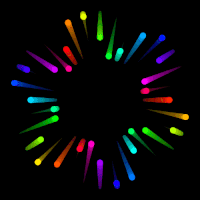Why Is the Ocean Blue?
It’s commonly believed that the ocean is blue because it’s reflecting the blue sky. But this is a misconception.
The ocean is blue because of the way it absorbs sunlight, according to the National Oceanic and Atmospheric Administration (NOAA).
When sunlight hits the ocean, the water strongly absorbs long-wavelength colors at the red end of the light spectrum, as well as short-wavelength light, including violet and ultraviolet. The remaining light that we see is mostly made up of blue wavelengths.
However, NOAA notes that the ocean may take on other hues, including red and green, if light bounces off objects floating near the surface of the water, such as sediment and algae.
Just how blue the water is depends on how much of it is available to absorb the light.
For instance, water in a glass is clear — there aren’t enough water molecules to really absorb the light.
But ocean water appears bluer the farther you travel down the water column. The water molecules absorb infrared, red and ultraviolet light first, and then yellow, green and violet.
Blue light is absorbed the least, giving it the greatest ocean penetration depth, according to NASA.
This fact is clear if you look at unedited underwater photos that weren’t taken with a camera flash or another artificial light source — even the most vibrant of tropical fish look blue.
Source: Live Science



Leave a Reply